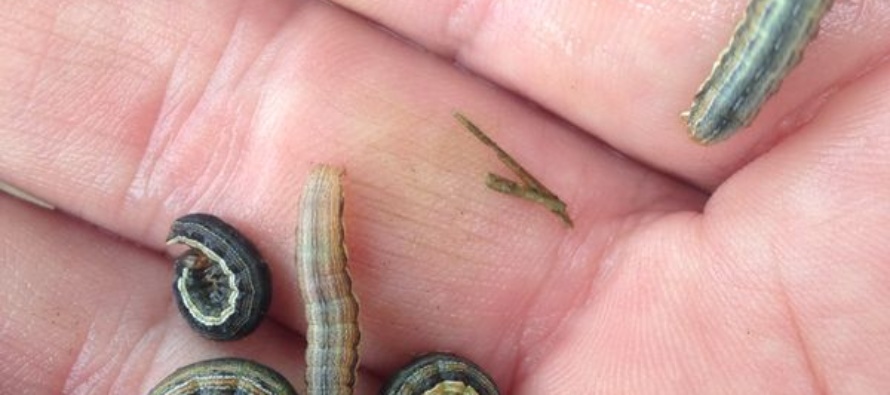True Armyworm and Stink Bug in Wheat

Related Articles
- Spring Nitrogen Fertility Suggestions for Wheat 0
- Mississippi Cotton Insect Situation of 2010: A Look Back 3
- Rice Insecticidal Seed Treatment Recommendations for Mississippi in 2011 0
Latest Tweets
Armyworms:
Over the last few days we have had several reports of true armyworms showing up in wheat. Most of the calls received so far have reported numerous worms at the ground level starting to defoliate up the plant. Once wheat starts heading and reaches the dough stage, it is very difficult to show any yield benefits from treating armyworms in the absence of head clipping simply from defoliation.
Watch for blackbirds feeding in wheat fields, this is often an indication that armyworms are present. Armyworms are not difficult to control and typically mid-rates of pyrethroids work very well. When scouting for armyworms in the heat of the day it is critical to pull the plants back and search the ground or near the ground for larvae. In Mississippi, we recommend treating armyworms in wheat when numbers reach 5-6 per sq. ft. prior to the dough stage or when defoliation is reaching the flag leaf prior to dough stage. Treatment after the dough stage is only recommended when head clipping is observed.

Stink Bugs:
Although its a little early, we figured we would address stink bugs now. It is not uncommon to find numerous stink bugs in wheat after head emergence. Species attacking wheat are typically rice stink bug and brown stink bugs but greens can sometimes be found. While it may seem very alarming, keep in mind it takes extremely high numbers to cause economic damage to heading wheat. Research from the early 80’s showed that the milk stage of development is most susceptible to damage from stink bugs which can reduce grain weight or germination, but again, its takes incredibly high numbers. Current stink bug thresholds for wheat are 1 stinkbug/5-10 heads in the milk and soft dough stage (No sweep net threshold). Once wheat reaches the hard dough stage the likelihood of damage from stink bug is diminished greatly. Generally, the predominant stink bugs in Mississippi wheat are rice stink bugs with a few browns mixed in. Likelihood of stink bugs hitting threshold is extremely low but not impossible. If they do, it will generally be confined to field borders and populations tend to be lower away from field edges. Because we do not generally treat wheat for stink bugs, wheat can actually harbor lots of stink bugs that will eventually move out into corn (only concerned with brown stink bugs in corn). Be sure and scout adjacent corn fields closely for stink bugs once wheat starts to dry down. Remember that rice stink bugs will not be a problem in the corn, only brown stink bug.

Rice Stink Bug

Brown Stink Bug




Let me tell You a sad story ! There are no comments yet, but You can be first one to comment this article.
Write a comment